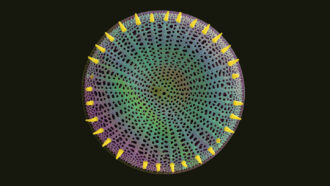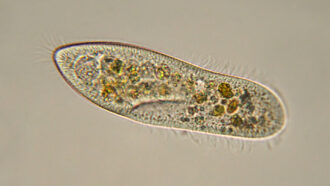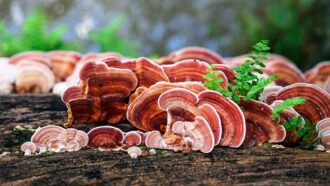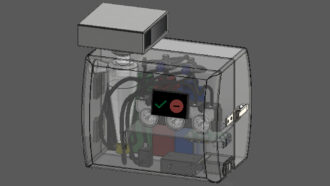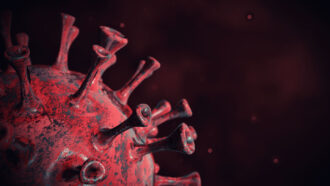Plant extract mutes germs to fight infections
An extract from leaves keeps bacteria from sensing how plentiful they are — and turning harmful
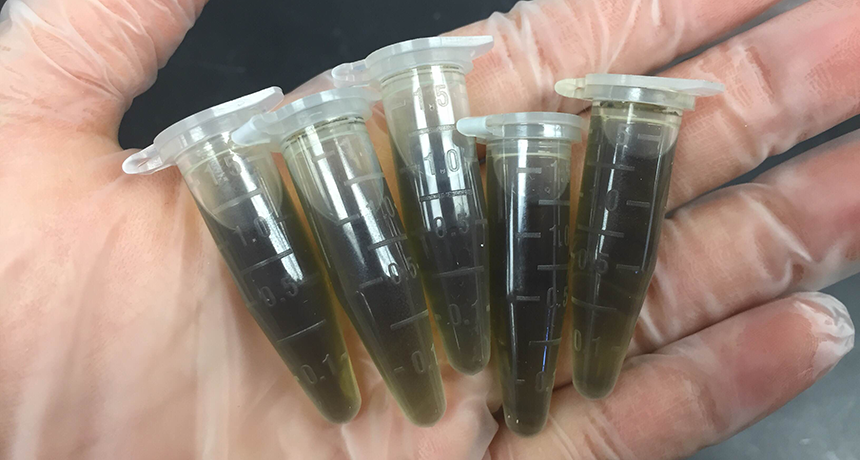
An extract from dried leaves of the sweet chestnut (Castanea sativa), a tree native to Europe and Asia, could help fight the development of nasty bladder infections.
D. Thapa
By Sid Perkins
LOS ANGELES, Calif. — Some bacteria have alter egos. In small numbers, they pose no harm. But once they form a large crowd, they can turn into an aggressive, disease-causing mob. This doesn’t have to happen, however. The extract of a common plant could short-circuit this transformation, a teen’s research now finds. The extract confuses the germs so that they never realize how numerous they are.
Devina Thapa, 17, of the Academy of Science in Sterling, Va., described her new research here, last month, at the Intel International Science and Engineering Fair.
The teen harnessed a plant product to deter infection by germs that pose a risk to the body’s urinary tract. That system includes the bladder (a hollow organ that stores urine until you’re ready to pee). Each year, millions of people contract urinary tract infections (UTIs). And roughly four in every five of those UTIs, Devina notes, seem to stem from medical use of a tube to drain urine from the bladder. That tubing is known as a catheter (KATH-eh-tur).
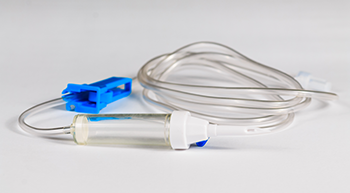
People need catheters for a variety of reasons, most of them related to being unable to control their bladder. Patients may need a catheter if they have blockages such as bladder stones or kidney stones. Certain medications make it difficult to urinate. Plus, some types of surgery can make it painful to pee. Overall, statistics suggest that between 15 and 25 percent of patients in the hospital get a catheter at some point in their stay.
Catheters can pick up germs when they’re inserted into the body. One of the most common species they pick up is Staphylococcus epidermidis (STAF-ih-lo-KOK-us Ep-ih-DER-mih-dis). These bacteria take part of their name from where they live. Epidermis is the scientific name for the outer layer of skin. And on the skin, these microbes usually cause no harm. But inside the body, they find far friendlier growth conditions. It’s warm and moist, and they are protected. This permits the bacteria to multiply.
And when they proliferate into mobs, their behavior changes for the worse, says Devina. The germs send chemical signals to each other in a process called quorum sensing. Quorum (KWOR-um) comes from a Latin word. It’s defined as the minimum number of people needed at a meeting for decisions there to be considered official.
For her project, Devina wanted to see if she could interfere with the ability of S. epidermidis to form a gooey biofilm. Biofilms stick to surfaces, including catheters. The slimy film protects a community of germs, making it difficult for the body — or drugs — to kill. At present, says Devina, treatments that inhibit quorum sensing don’t seem to cause drug resistance. Drug resistance can arise with treatments that set out to kill bacteria. If some of the bacteria survive a treatment that kills most of them, they go on to reproduce. This can give rise to a strain of the germs that resists later treatment.
Researchers already know that plant extracts of the sweet chestnut tree interfere with quorum sensing among Staphylococcus germs. That tree species, Castanea sativa (CAS-tuh-nay-uh Sah-TEE-vah), grows from Europe to southwestern Asia. But Devina wondered if extracts of this plant would work if they were a part of the material used to make catheters. That tubing often is made from flexible polymers such as silicones, she notes. One common type is known as PDMS. That’s short for polydimethylsiloxane (PAH-lee-dye-METH-ill-sy-LOX-ayne).
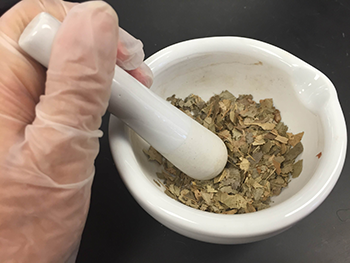
So, Devina decided to make her own versions of PDMS that included the extracts. She purchased dried leaves, ground them up and soaked them in ethanol (a type of alcohol) for 24 hours. (That’s a common way to obtain plant extracts, she notes.) Then, she filtered out the leaves and collected the liquid. This was her extract. She diluted this extract with different amounts of water to make solutions that were between one-quarter and three-quarters as strong as the starting extract.
Finally, she molded small disks of PDMS. To do this, she purchased PDMS in liquid form, then added a hardener. She also added various amounts of her extract to this mix (before it solidified into a flexible rubberlike material). She also made PDMS disks that contained silver nanoparticles instead of her extract. Nanosilver is known to kill many types of germs. She mixed her materials in the weight ratio of 10:1:1. The first number represents the weight of PDMS liquid. The second number was the weight of the liquid needed to cure the PDMS into a flexible solid. The third number was weight of the added extract or nanosilver.
Devina made six different versions of her disks. One included the nanosilver. Four versions included the various strengths of plant extract. The final version, a control for the experiment, had water instead of the extract or nanosilver. Unlike the other treatments, that water form shouldn’t affect the bacteria.
Once they were cured, Devina placed her silicone disks in mixtures of urine and bacteria. Then, she heated those mixtures to 37° Celsius (98.6° Fahrenheit), which is body temperature. After incubating the disks in this environment for a while, she added a stain to the mix. It would glow in certain types of light if the bacteria had formed biofilms. The development of a biofilm would signal that the germs had amassed to mob status and could foster disease.
As expected, the PDMS disk that included silver nanoparticles stifled biofilm growth. The weakest solutions of the plant extract didn’t. Disks made with them became covered with the same amount of biofilm as had grown on the disks made with plain water. But disks made with stronger extracts were protected. Among disks made with the three-quarter strength extract, a biofilm only covered about 10 percent of the area covered on the untreated disk. The full strength extract cut the biofilm growth even more, to just 3 percent of what fouled the untreated disks.
These results hint that the plant extract could be used to retard bacterial growth in all sorts of PDMS medical devices, the teen now claims.
Maybe one of the best things about her treatment is that it costs so little. One gram of silver nanoparticles cost about $25, she notes. But a gram of her extract costs about 3 cents.
The 12th-grader’s project earned Devina a second-place award worth $1,500 from ISEF judges in the category of Translational Medical Science. ISEF was created by Society for Science & the Public and is sponsored by Intel. The competition lets students from around the world show off their winning science fair projects. (The Society also publishes Science News for Students.) This year, Devina was one of nearly 1,800 high school finalists from more than 75 countries who competed for big prizes and the ability to display their work.
